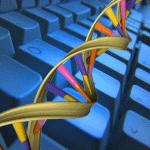Bioinformatics
|
1 july 2016 10:34:25 |
| Computational exploration of the binding mode of heme-dependent stimulators into the active catalytic domain of soluble guanylate cyclase (Proteins: Structure, Function, and Bioinformatics) |
|
Tweet Soluble guanylate cyclase (sGC), the main target of nitric oxide (NO), has been proven to have a significant role in coronary artery disease, pulmonary hypertension, erectile dysfunction and myocardial infarction. One of its agonists, BAY 41-2272 (Riociguat) has been recently approved for treatment of pulmonary arterial hypertension (PHA), while some others are in clinical phases of development. However, the location of the binding sites for the two known types of agonists, heme-dependent stimulators and heme-independent activators, is a matter of debate, particularly for the first group where both, a location on the regulatory (H-NOX) and on the catalytic domain have been suggested by different authors. Here, we address its potential location on the catalytic domain, the unique well characterized at the structural level, by an `in silico` approach. Homology models of the catalytic domain of sGC in `inactive` or `active` conformations were constructed using the structure of previously described crystals of the catalytic domains of `inactive` soluble guanylate cyclases (2WZ1, 3ET6) and of `active` adenylate cyclase (1CJU). Each model was submitted to 6 independent molecular dynamics simulations of about 1 ms. Docking of YC-1, a classic heme-dependent stimulator, to all frames of representative trajectories of `inactive` and `active` conformations, followed by absolute binding free energies with the linear interaction energy method (LIE), revealed a potential high-affinity binding site on the `active` structure. The site, located between the pseudo-symmetric and the catalytic site just over the loop ?2-?3, does not overlap with the forskolin binding site on adenylate cyclases. This article is protected by copyright. All rights reserved. |
| 159 viewsCategory: Biochemistry, Bioinformatics |
 THz frequency spectrum of protein-solvent interaction energy using a recurrence plot based wiener-khinchin method (Proteins: Structure, Function, and Bioinformatics) THz frequency spectrum of protein-solvent interaction energy using a recurrence plot based wiener-khinchin method (Proteins: Structure, Function, and Bioinformatics)Conformational flexibility of the complete catalytic domain of Cdc25B phosphatases (Proteins: Structure, Function, and Bioinformatics) 
|
| blog comments powered by Disqus |
MyJournals.org
The latest issues of all your favorite science journals on one page
The latest issues of all your favorite science journals on one page



